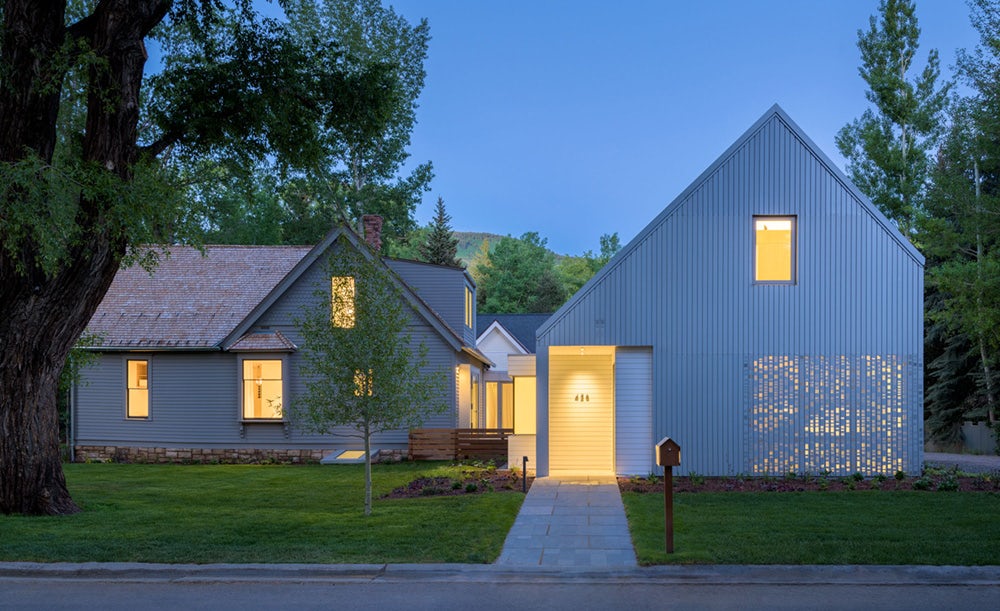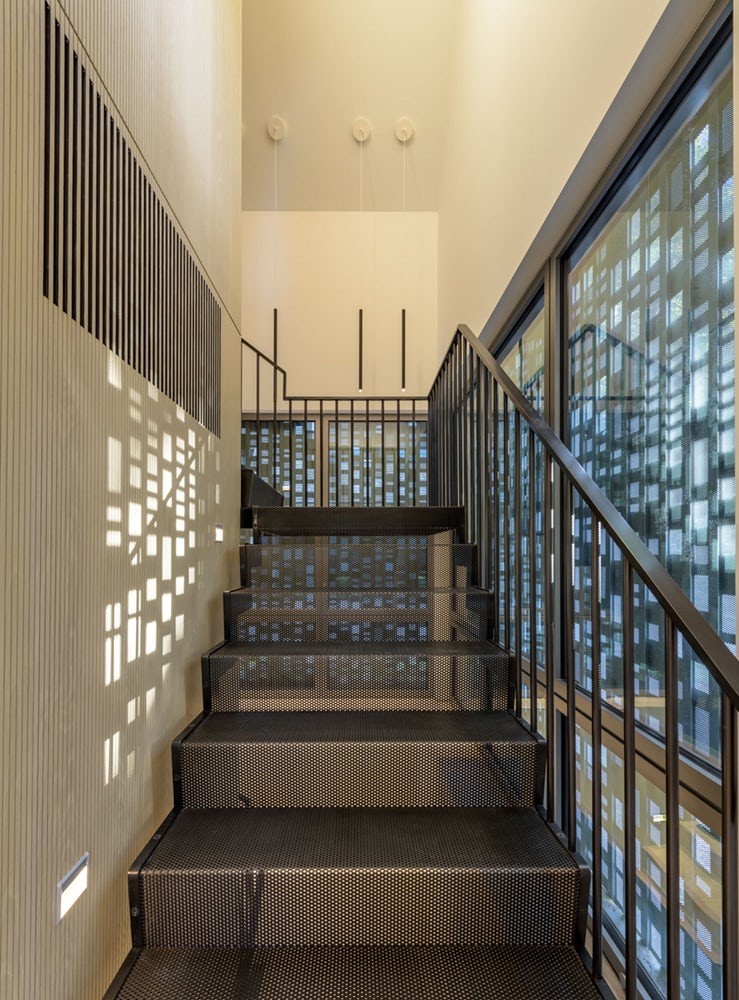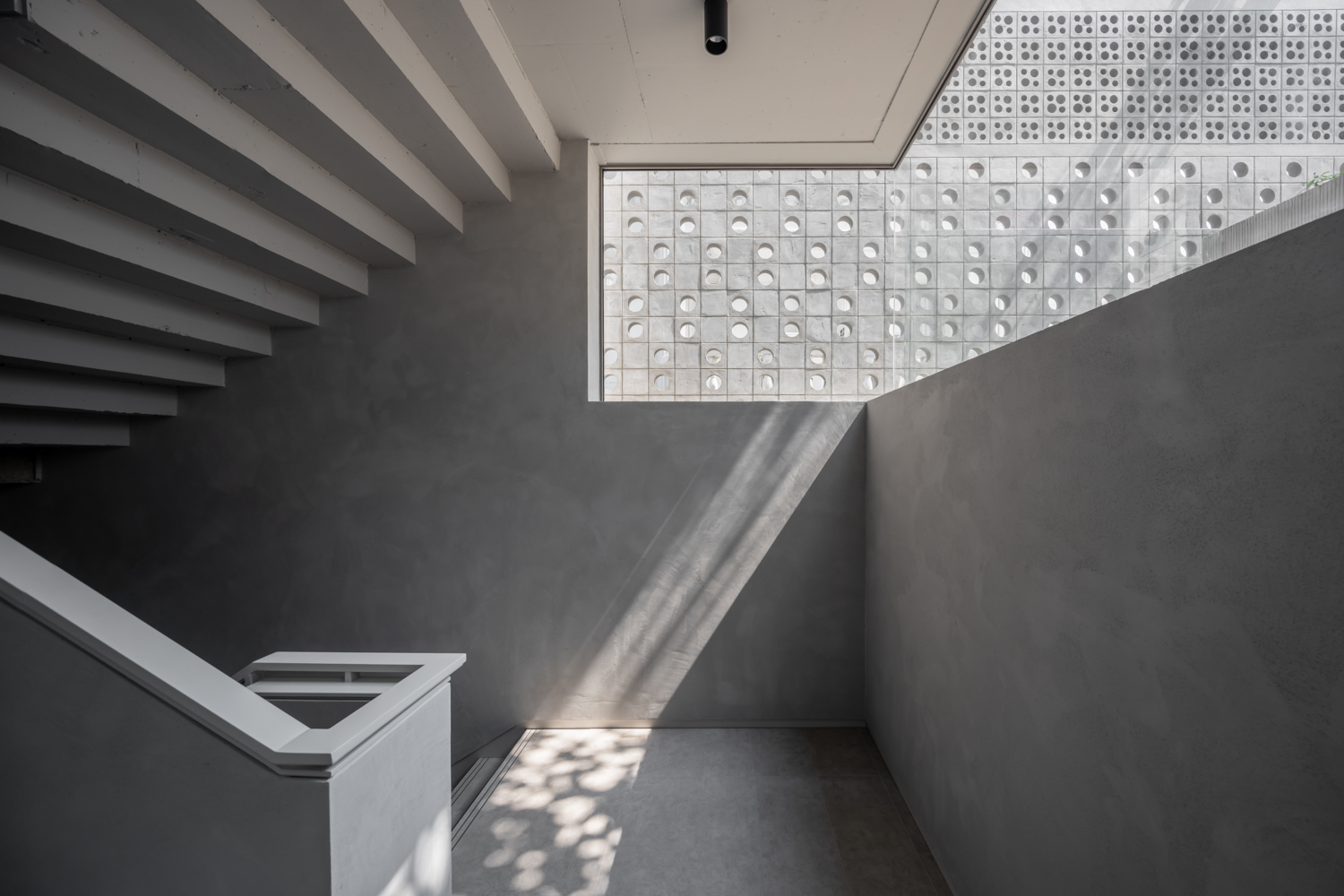Architects: Want to have your project featured? Showcase your work by uploading projects to Architizer and sign up for our inspirational newsletters.
Perforated façades, screens and panels have been used in architecture for centuries. A solid material pierced with small holes is an effective and functional means to control sunlight, heat and privacy. While it may be a functional technique, architects oftentimes take these perforated elevations one step further to imbue a design with artistry and aestheticism.
In a residential setting, a perforated elevation can transform the interior space. All it takes is a few meticulously thought-out cavities and an intentional play of light; the result is an aesthetically-pronounced shadow sequence filling the home’s interior. Listed below are seven residential homes, all of which use perforated walls in a thoughtful, character-building manner.


Photos by Draper White
Victorian Music Box by CCY Architects, Aspen, CO, United States
2021 A+Awards Jury Winner
Located in Aspen’s historic mining district is an updated 19th-century Victorian home. The homeowners are deeply involved in the music scene and desired an airy space where they can host recitals. Due to the home’s southwest exposure, the architects had to create a light-filled space without compromising privacy.
In order to do so, a perforated aluminum façade was added to the exterior of the home to control light, heat, and privacy. The architects took their design one step further and created the perforations based on Chopin’s Nocturne in E-Flat Major, Op. 9, No. 2. – one of the client’s favorite compositions. The perforated façade changes from day to night and truly doubles as a functional architectural tool and as well as an artistic masterpiece.
EASTERN Design Office challenges the traditional use of windows through the distinctive application of perforated slits. Dubbed the Slit House, there is not a single window in this home; instead, a series of slits were integrated into the façade in order to let in light.
The slits produce an overall heightened sensitivity to light as the thin openings create narrow yet powerful streams of brightness. Moreover, the thin projections of light stand pronounced against the dark interior, and thus create a highly aestheticized and artistic space.
Anonym architects designed a four-story dwelling that houses three families. In order to prioritize privacy while maintaining continuity throughout the home, the designers viewed the project more as a service apartment than a single-family dwelling. The first floor houses all the communal spaces, such as living and dining, while the upper floors are reserved for private spaces, such as sleeping and bathing.
The home’s elevation features a wall of perforated bricks. The degree of perforation was decided depending on the function of the room. For example, the bricks covering the bedrooms were laid tightly in order to prioritize privacy. While the communal spaces face a façade with loosely stacked bricks and enjoy a more expansive light exposure.
Photos by Derek Swalwell
Seaberg by Kerstin Thompson Architects, Melbourne, Australia
A residential home in Melbourne, Australia challenges the traditional house typography by deconstructing the home into a series of detached spaces. By separating the house into various volumes, the dwellers are put in touch with nature through a continuous engagement with the outdoors. The home was designed with elevated interior spaces which maximize views of the nearby sea. The architects also incorporated perforated and slatted screens that can be adjusted depending on the climate and dwellers’ desires. The screens ventilate the home while equally creating a playful pattern of circles on the interior walls.
Photos by John Gollings Photography
Judo House by Nervegna Reed Architecture, Melbourne, Australia
This dwelling was designed for two Judo professionals who desired a home that would reflect their love for martial arts. In order to meet this request, the architects created a basement layout that could easily convert into a Judo-practicing space.
The home sits on a narrow site, and in order to maximize space and light, the designers incorporated a series of glass cavities throughout the residence. For example, circular cut-outs can be found on the ground floor which enhances the natural light in the basement and equally allows the dwellers to see into the Judo practice below. Additionally, a perforated metal screen was included on the exterior façade. This screen is made of geometric shapes, which allows light to fill the interior space and creates a patterned shadow within the walls of the home.
A traditional 70s Polish home has been remodeled and imbued with a contemporary, functional feel. The home balances old and new through its favoring of simple lines mixed with Art Nouveau furnishing. Redesigned with a simple cubed shape, the house features a functional double garage. Glass was used in both the front and back elevations in order to create an airy atmosphere.
Moreover, to connect the decorative Art Nouveau style with the new contemporary feel, an openwork design was included on two specific parts of the elevation. These ornate façade details create a unique play of light within the home, and equally, add a decorative element that is enjoyed within the private spaces of the dwelling.
Kas di Coral is a private residence that is equally understated as it is distinctive. The home is made of a monochrome box-like structure and was constructed as such to adhere to the neighborhood’s design requirements. Nonetheless, the façade stands out due to its perforated sections.
Created in collaboration with Tanja Isbarn — a Groningen-residing visual artist — two organically produced perforated designs decorate the exterior walls. The oblique cutouts allow light to reflect onto the home’s floors, which change throughout the day depending on the sun. Inspired by coral masses, this façade speaks to the irregular shapes of such marine species and enforces a connection between art, architecture and nature.
Architects: Want to have your project featured? Showcase your work by uploading projects to Architizer and sign up for our inspirational newsletters.
